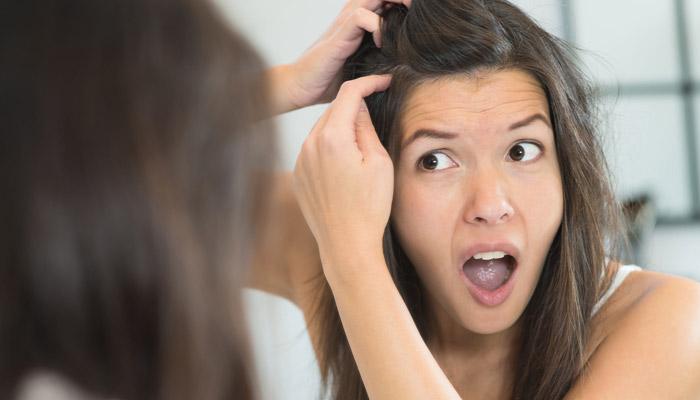5 Mistakes To Avoid As You Deal With Premature Graying

Premature hair graying is increasingly becoming a widely prevalent condition. Factors like pollution, poor diet and lifestyle, stress, heat styling and use of chemical products are responsible for this common problem. When the first grays pop up in your twenties, it can be quite nerve-racking because getting them is something you may have never expected. The next question that will be asking your hair experts will be how to prevent premature gray hair. Well, you will get hundreds of suggestions from everyone around you, from eating healthy to avoiding styling, staying away from stress, and more. While many of these suggestions will be worthy enough, there are still some things that you need to be extra careful about while dealing with premature graying. Here are some mistakes that you should absolutely avoid.
1. Plucking your silver streaks
Perhaps, your first reaction when you see those silver streaks will be to pluck them off. Of course, there is no truth to the notion that if you pluck one, you will get more of them growing back. But the fact is that pulling your hair traumatizes the follicle and repetitive trauma can be really harmful. Plucking your hair is one mistake that will make your scalp weaker; instead of resolving the problem of premature graying, it can aggravate the issue of hair fall too. If you do feel like clearing out the gray strands, cut them off.
2. Doing too much to cover them up
It is but natural to be conscious about gray hair if you get them early, but doing too much to cover those up can be the worst thing to do. Using non-permanent touch-up products is a better option as they do not damage your hair and skin. Moreover, they blend naturally and give your grays a flawless coverage. You can also consider natural coloring alternatives such as henna. If you do have to dye, use an ammonia-free product. Consult a professional even if you plan to touch-up instead of opting for global color. They will help you in choosing the right shade for a natural look.
3. Using just any hair color to dye your grays
Another common mistake that people make while dealing with early hair graying is just picking any hair color to dye them. The best way to handle this is to get professional advice, at least when you start coloring your hair. Do your research about coloring options (ammonia and non-ammonia products) and learn about post-coloring maintenance. Have a professional colorist to do it for you and ask them about touch-ups that you can do at home in between the coloring visits. Consider the option of highlights to cover the first grays, while you work at preventing more of them for a few years at least.
4. Not taking good care of your hair
Premature graying means that your hair needs extra care, particularly if you are going to use chemical-based coloring products in the years to come. Such products tend to rip off the natural moisture from the scalp and cause the hair to become coarse and dry. So you should use shampoos and conditioners that are specifically meant for restoring the moisture and retaining the hair color for a longer time. Regular oiling will also do a lot of good to colored hair. Excessive heat styling is another thing that you should avoid to prevent further hair graying.
5. Not paying attention to your diet and lifestyle
Just covering your grays is not the solution; if you are not paying attention to the root of the problem, you will never be able to prevent it from worsening. Assess your dietary habits and identify the nutritional gaps. Start eating healthy and taking supplements to cover these gaps. Abstain from alcohol and smoking. Avoid exposure to the harsh UV rays of the sun as well as environmental pollutants. Stay away from stress and anxiety as these are the invisible enemies that go unnoticed but cause great harm. Another mistake to avoid is using low quality hair products and doing too much styling.
These mistakes may sound trivial but their impact can be far-reaching. Premature graying is a problem that can be slowed down to a considerable extent, even if you cannot do anything to reverse the damage once done. See a dermatologist if you want expert opinion on the basis of proper diagnosis. A specialist can come up with a treatment plan comprising the right medication and lifestyle changes to address this concern in an effective manner.
Akshay Sharma
Latest posts by Akshay Sharma (see all)
- Are You Using a Loan Calculator for Second Hand Car Rightly? - October 13, 2025
- Round Steel Tanks: Long-Term Solutions for Water Storage - September 19, 2025
- Embrace the Culture: Syna World Hoodie and Syna World Tracksuit UK - September 13, 2025
- Comfort and Style: The Best Boys Hoodies for Active Kids - September 10, 2025
- Why Every Digital Marketer Needs a Free URL Extractor in Their SEO Toolkit - September 4, 2025
- Short Hair Maintenance: Things You Need to Know
- Differences between Commercial and Residential Gensets
